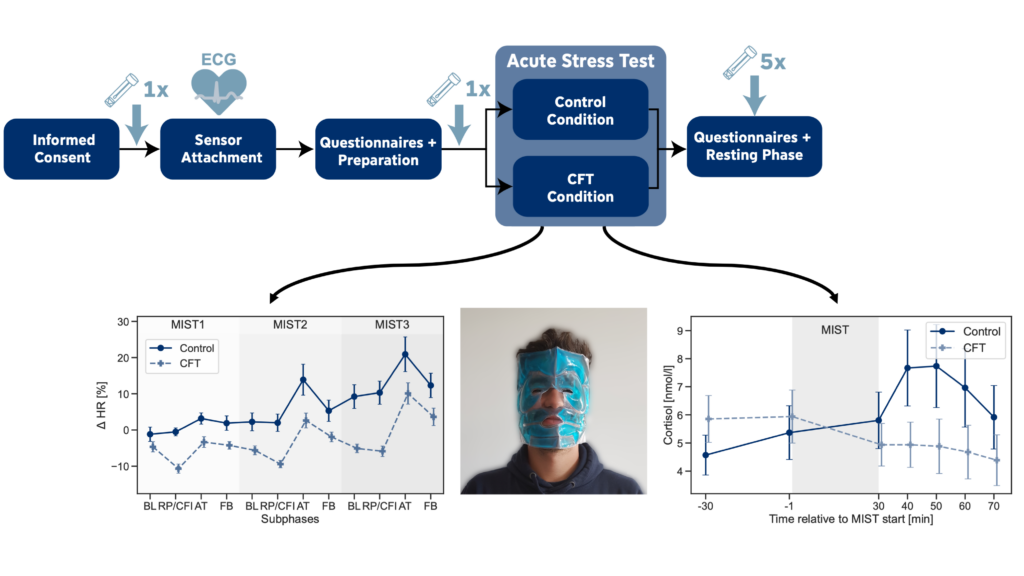Cold Face Test for Acute Psychosocial Stress Reduction
Chronic stress is linked to dysregulations of the two major stress pathways — the sympathetic nervous system and the hypothalamic-pituitary-adrenal (HPA) axis, which could for example result from maladaptive responses to repeated acute stress. Improving recovery from acute stress could therefore help to prevent this dysregulation.
In this work, we explore whether applying a cold stimulus to the face (Cold Face Test, CFT) has the potential to physiologically interfere with an acute stress reaction. The CFT activates the parasympathetic nervous system (PNS), leading to immediate heart rate decreases. We used the CFT protocol as an intervention method for reducing acute stress responses. Our findings suggest that the CFT can successfully stimulate the PNS and inhibit the HPA axis, resulting in less cortisol secretion. To the best of our knowledge, our experiment is the first to successfully use the CFT as a simple and easy-to-apply method to modify biological responses to acute stress.

Code and Datasets
All code used within this project is available under an open-source license on GitHub:
- cft-analysis: All analysis code that was used to create the results used in our publications. It is available on GitHub.
Additionally, all collected data are also available:
- Cold Face Test Dataset: A dataset collected to explore the cold face test (CFT) as a mechanism for reducing acute psychosocial stress responses. It is available on OSF.
Publications
- Richer R., Zenkner JJ., Küderle A., Rohleder N., Eskofier B.:
Vagus activation by Cold Face Test reduces acute psychosocial stress responses
In: Scientific Reports 12 (2022), Article No.: 19270
ISSN: 2045-2322
DOI: 10.1038/s41598-022-23222-9
URL: https://www.nature.com/articles/s41598-022-23222-9
BibTeX: Download
